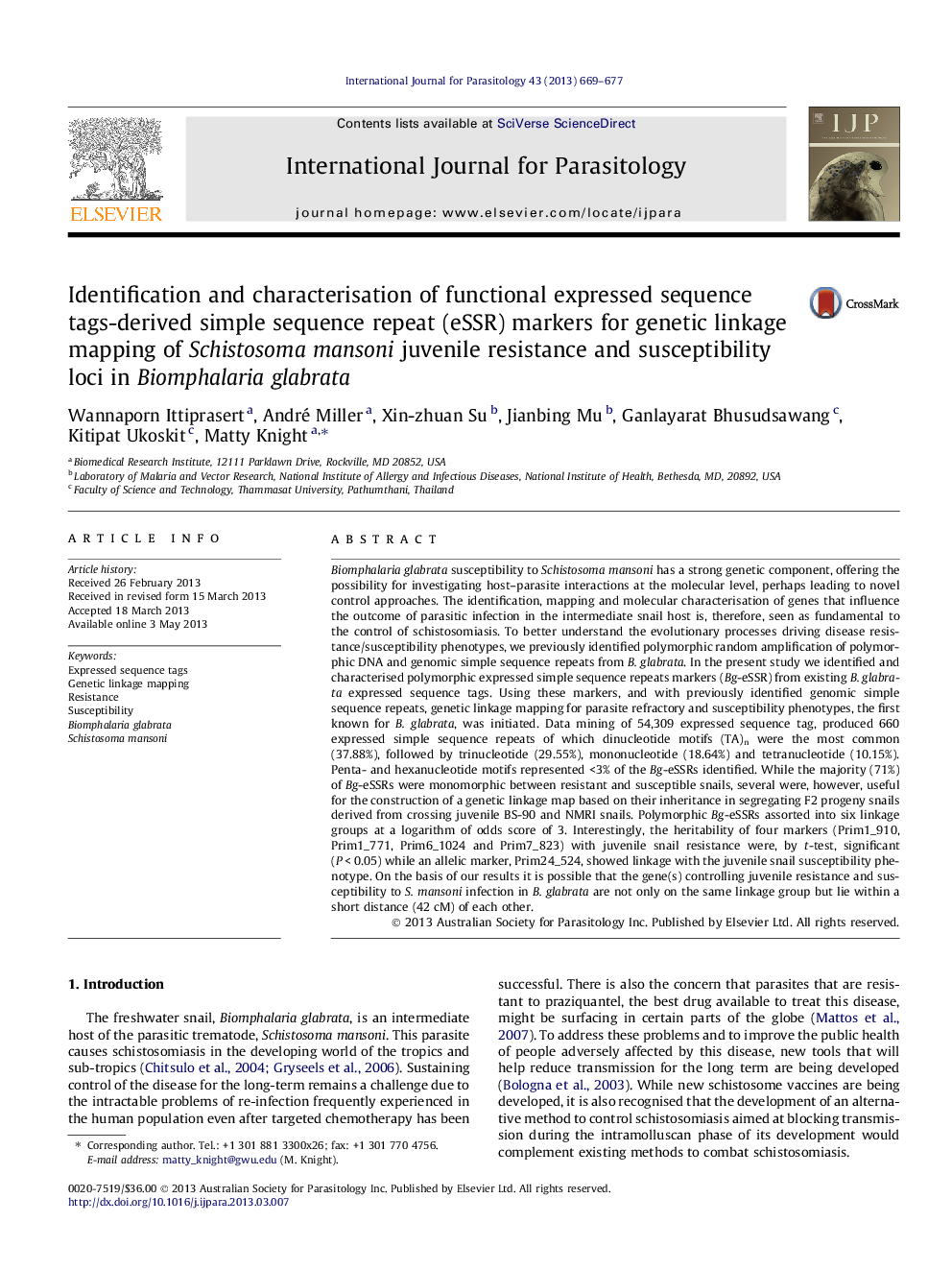| کد مقاله | کد نشریه | سال انتشار | مقاله انگلیسی | نسخه تمام متن |
|---|---|---|---|---|
| 2436043 | 1107262 | 2013 | 9 صفحه PDF | دانلود رایگان |

• This is the first study that identified gene-related microsatellite of Biomphalaria glabrata using data mining.
• Genetic linkage map construction based on F2 progenies between resistant and susceptible snails coding B. glabrata markers.
Biomphalaria glabrata susceptibility to Schistosoma mansoni has a strong genetic component, offering the possibility for investigating host–parasite interactions at the molecular level, perhaps leading to novel control approaches. The identification, mapping and molecular characterisation of genes that influence the outcome of parasitic infection in the intermediate snail host is, therefore, seen as fundamental to the control of schistosomiasis. To better understand the evolutionary processes driving disease resistance/susceptibility phenotypes, we previously identified polymorphic random amplification of polymorphic DNA and genomic simple sequence repeats from B. glabrata. In the present study we identified and characterised polymorphic expressed simple sequence repeats markers (Bg-eSSR) from existing B. glabrata expressed sequence tags. Using these markers, and with previously identified genomic simple sequence repeats, genetic linkage mapping for parasite refractory and susceptibility phenotypes, the first known for B. glabrata, was initiated. Data mining of 54,309 expressed sequence tag, produced 660 expressed simple sequence repeats of which dinucleotide motifs (TA)n were the most common (37.88%), followed by trinucleotide (29.55%), mononucleotide (18.64%) and tetranucleotide (10.15%). Penta- and hexanucleotide motifs represented <3% of the Bg-eSSRs identified. While the majority (71%) of Bg-eSSRs were monomorphic between resistant and susceptible snails, several were, however, useful for the construction of a genetic linkage map based on their inheritance in segregating F2 progeny snails derived from crossing juvenile BS-90 and NMRI snails. Polymorphic Bg-eSSRs assorted into six linkage groups at a logarithm of odds score of 3. Interestingly, the heritability of four markers (Prim1_910, Prim1_771, Prim6_1024 and Prim7_823) with juvenile snail resistance were, by t-test, significant (P < 0.05) while an allelic marker, Prim24_524, showed linkage with the juvenile snail susceptibility phenotype. On the basis of our results it is possible that the gene(s) controlling juvenile resistance and susceptibility to S. mansoni infection in B. glabrata are not only on the same linkage group but lie within a short distance (42 cM) of each other.
Figure optionsDownload high-quality image (140 K)Download as PowerPoint slide
Journal: International Journal for Parasitology - Volume 43, Issue 8, July 2013, Pages 669–677